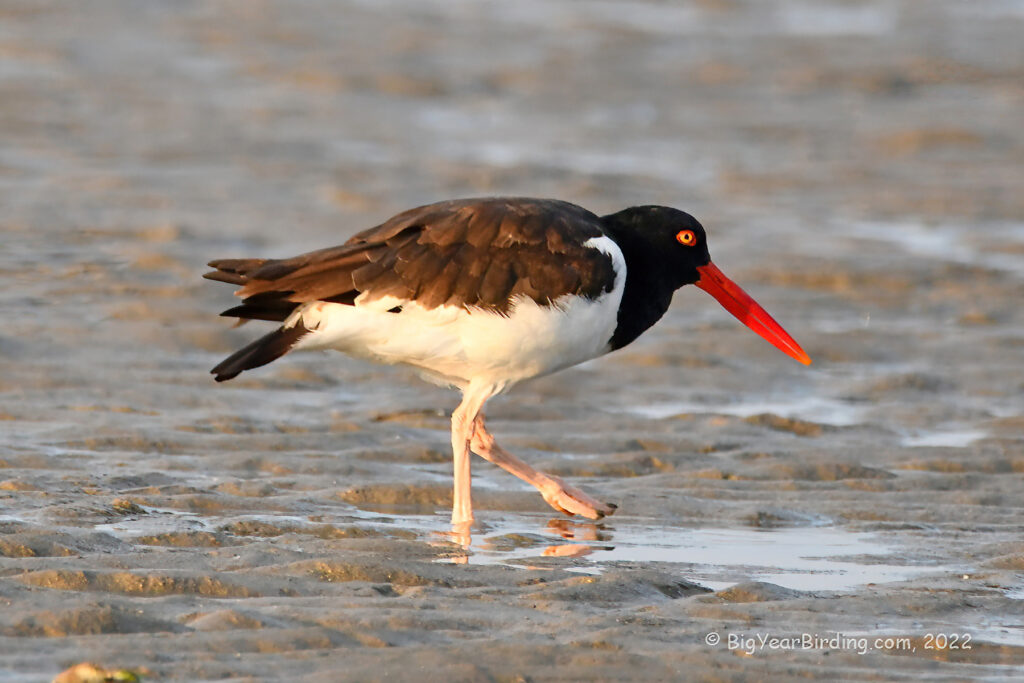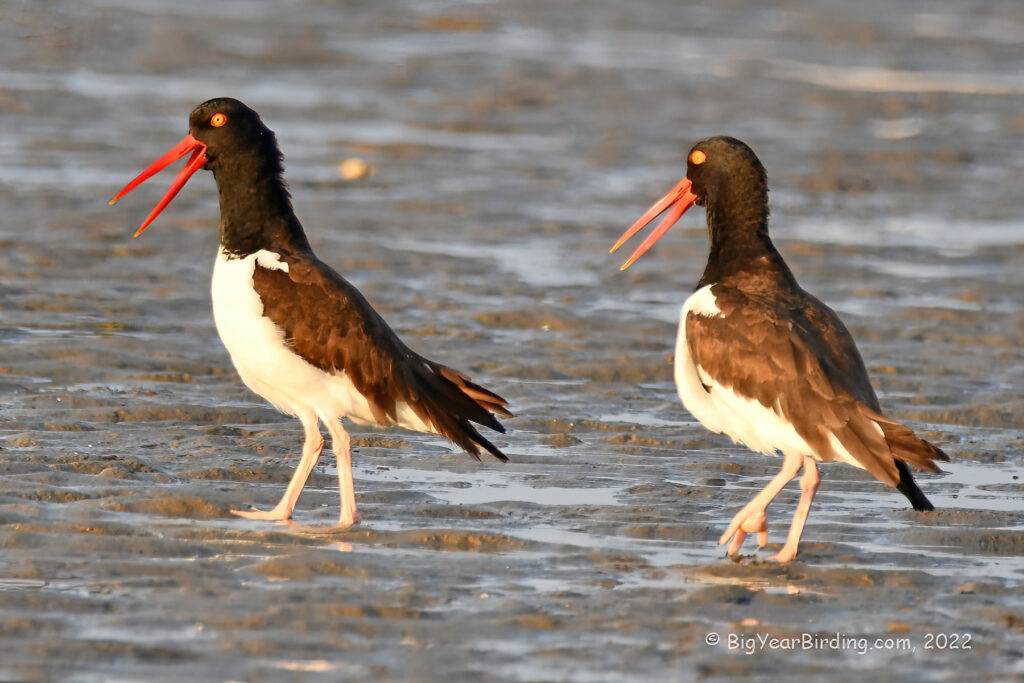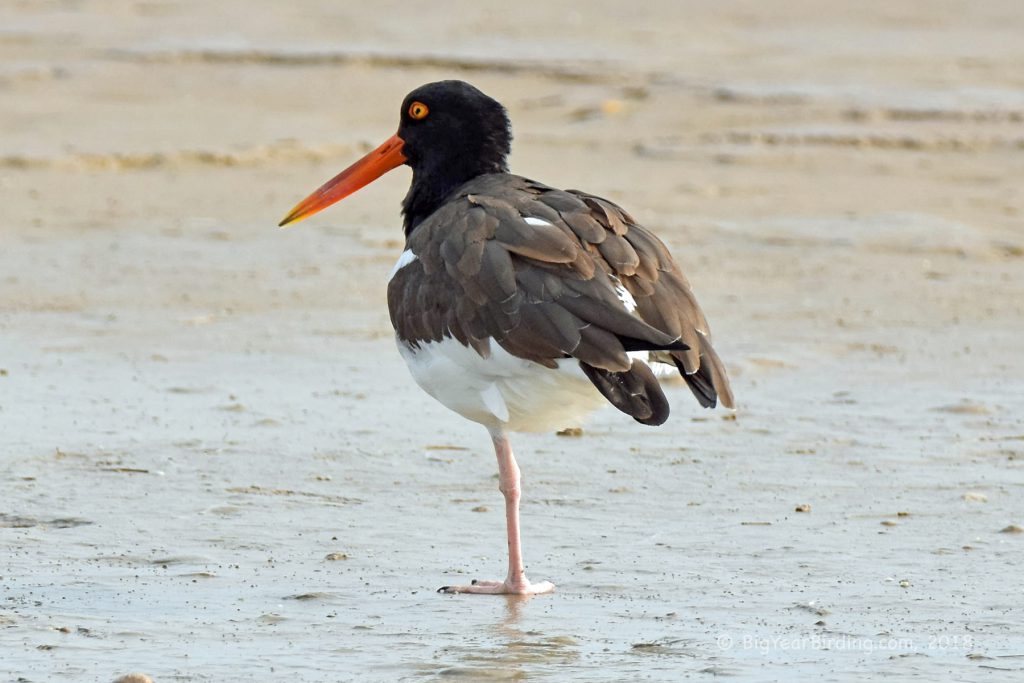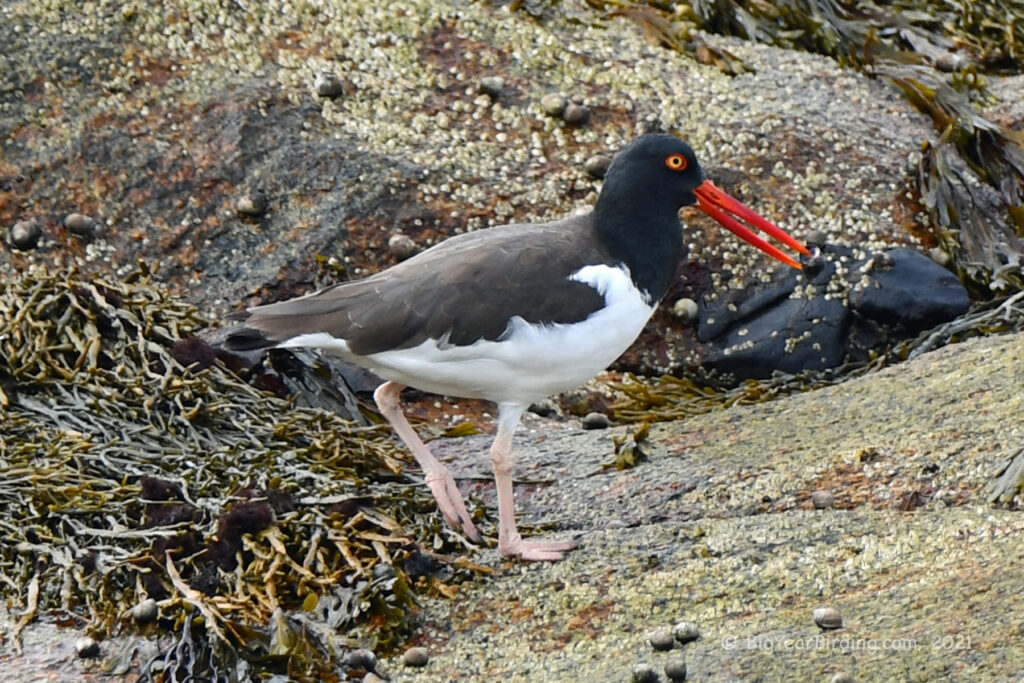
The American oystercatcher (Haematopus palliatus) is a large, conspicuous shorebird found along the Atlantic and Gulf coasts of North America. Adult birds can reach up to 19-22 inches in length with a wingspan of 35-39 inches. They weigh between 1.1 and 2.2 pounds, with females typically being larger than males.

The American oystercatcher is easily identifiable by its distinctive appearance. It has a black head, back, and wings, and a white belly. Its long, bright orange bill is thick and slightly curved, with a pointed tip that is used to pry open mollusk shells. Its legs are pink, and its eyes are yellow with a red ring around them. Juvenile birds have a browner appearance with a dark bill and eyes.
The American oystercatcher is a migratory bird, with populations in the northern part of its range breeding from April to August before migrating to the southern part of its range for the winter. Some birds will migrate as far south as South America. During migration, they can be seen along the coasts and on mudflats and beaches in large flocks.
The American oystercatcher is primarily found along the coastlines of North America, from Maine to the Yucatan Peninsula. It prefers to nest on beaches, dunes, and marshes near tidal creeks and estuaries. During the breeding season, they will defend their nesting territory vigorously, making loud calls and even attacking intruders with their sharp bills.

Although the American oystercatcher is not considered globally threatened, some local populations are declining due to habitat loss and disturbance, egg collection, and predation. Conservation efforts, such as protecting nesting sites and controlling human disturbance, are crucial to ensure the continued survival of this iconic bird species.

